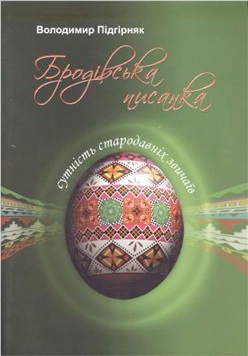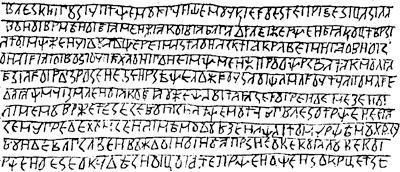The Pysanka Code

Many pysanka “artists” approach pysankarstvo as though pysanky were rebuses or lines of code, and consider a pysanka, in some ways, a coded message. It’s not.......at least in traditional pysankarstvo.
The symbolic meaning of a pysanka depends upon several elements, including the totality of the design and its many elements, and its history. The meanings of traditional pysanky are ancient, although some have evolved over time, and not always readily apparent or even remembered.
You can’t simply take a bunch of disparate elements, and put them together on an egg to create a message. Not really. Of course you can do so, but it won’t be a traditional pysanka.....or a pysanka, at all. It will be a pretty egg.
......And then there is the Brody pysanka. I first heard about this type of pysanka about a dozen years ago from Olenka, an art teacher from Rivne that I’d met at our summer camp in Vorohta. She had lots of materials about pysankarstvo, and offered to share them with me. Some she gave me there at camp; others she xeroxed when she got home and then mailed to me. Among the materials she mailed me were several pages of “pysanka code.”
The pages showed how to write coded messages on pysanky. There were symbols for numbers, days of the week, phases of the moon, months, seasons and astrological signs. There were stylized versions of the Ukrainian alphabet, and instructions on how to turn words into designs. It was something quite different from anything I’d seen before.

In 2008 a book was published in Brody, Ukraine about the Brody pysanka, written by Volodymyr Pidhirniak (left), an architect originally from that town. In it the author not only provides information about the symbols and their writing and interpretation, but also deconstructs Hutsul church ornamentation (based on some numerological system he has found in the book of Veles1 and other sources). He has also published a book about the hidden messages in embroidery. Pidhirniak claims to have expanded on the work of ethnographer Ivan Honchar, but it all seems a bit out there to me. No, actually, WAY out there. Orbiting Saturn
In other words, bunk.
So, while I find this pysanka writing system interesting, I have no idea of its actual origins or traditions or history. I have had several people ask me to share it with them, and am thus placing it on my site. On the following pages are some copies of the material I was sent, material from Pidhirniak’s book, and the various sets of symbols.
Enjoy, but PLEASE don’t take any of it seriously!!!
___________
1. The Book of Veles is claimed to be a text of ancient Slavic religion and history written on wooden planks. It contains religious passages and accounts of history interspersed with religious morals. The earliest events in the book could be dated around 7th century BC and the latest happened in 9th century AD.
The book was allegedly discovered in 1919 and lost in 1941. Its authenticity is disputed, it is suspected to be a forgery made in the 1940s or the early 1800s; Moreover, different modern editions of the book have different versions of its text. Regardless, some Slavic Neopagans use it as their sacred text.

Back to MAIN Pysanka home page.
Back to Pysanka Index.
Search my site with Google
«Бродівська» Писанка
“Brody” Pysanka



